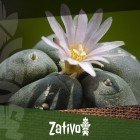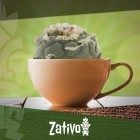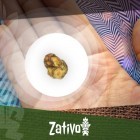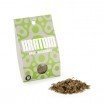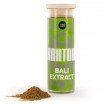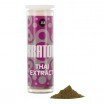Don't have an account?
Register NowYou have to add to cart at least 5 bottles or any program to make checkout.
- BlogThe History Of Kratom
The History Of Kratom
Published: January 26th, 2017
Categories:
Plants and Seeds
KRATOM - A BRIEF HISTORY
The recorded European history of Kratom begins in the mid-nineteenth century, but was probably observed by Dutch traders as early as the seventeenth century. The South East Asian history of kratom has no beginning as it has been a part of indigenous culture for thousands of years. It is an unremarkable part of daily life in many communities and is viewed no differently to coffee or nicotine.
Kratom is the dried leaf material of the plant named Mitragyna speciosa by E. M. Holmes in 1895. This member of the coffee family is native to many countries in the South East Asia, Indochina and Malaysia. Revered as a folk medicine for centuries by indigenous peoples, it is also used as a physical stimulant and narcotic.
The raw leaves are chewed by workers in Thailand as a stimulant during hard physical work and as a mood enhancer during monotonous tasks. Traditionally there is no stigma attached to kratom use, locally called kakuam or ithang. Generally kratom users are highly valued members of the community because of their reputation as uncomplaining hard workers.
KRATOM FOR HEALTH
Kratom is becoming ever more popular in the West. The naturally occurring analgesic effects make it the preferred natural and organic method for people wanting to stop the addiction caused by taking prescription medications or to mitigate the side effects of substance abuse withdrawals.
Whether being used recreationally for the dreamlike effects or used therapeutically for natural personal health care management, kratom has become a phenomenon in the USA and Europe over the recent years. There are many kratom strains commercially available, each known for their novel alkaloid compounds and differing effects.
The unique alkaloid profiles in kratom can act as opioid or andronergic receptor agonists in the brain, depending on dosage. At low doses it is a stimulant or andronergic, increasing alertness and sociability, energy and mood levels. It can induce mild feelings of euphoria and can stimulate the libido.
At high doses it is psychoactive and narcotic and induces a greater and more profound feeling of euphoria. Alertness is supplanted by decreased energy levels and the opioid-type analgesic effect subdues emotional and physical sensitivity.
Traditionally between 10 to 60 raw kratom leaves are chewed per day. In the West the consumer is spoiled for choice with kratom products from dried leaf to concentrates. Decide what effects you desire and research the effectiveness of several strains before making a decision. Respect and don't go overboard.
KRATOM COMPETENCE
When ingesting Kratom it is essential to adopt the right strategy to prevent developing a tolerance to the herb’s effects. The best way to avoid tolerance is to use Kratom sparingly. Most reasons for natural health care management only require dosing once per day. One large dose is better than several small doses.
If you are keen on recreational experience try only using two or three times per week. Mix strains and dose sizes regularly. This will stop the body from adapting to a regular dose of the same material and building tolerance too quickly. First-timers should only use powders and stay away from concentrates, as the brain will adapt too quickly to this high dose and tolerance will build rapidly.
Kratom is legal in Europe and the United States. Although classed as a foodstuff, the DEA has had it on the items of concern list for a number of years. It is illegal and a scheduled substance in Australia, Myanmar, Malaysia and most ironically Thailand. It has been illegal to plant or harvest from kratom trees since 1943 and the Thai government actively cuts trees down. Kratom still remains popular in South East Asia, despite its legal status and continues to gain popularity in the West.
Enjoy and be safe.


